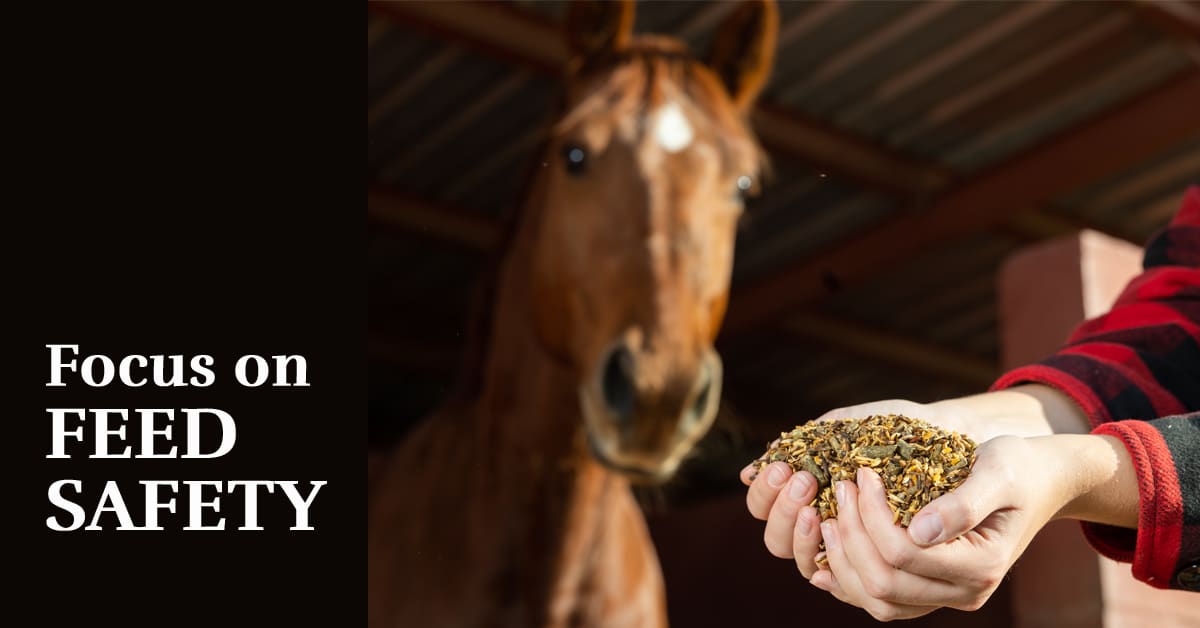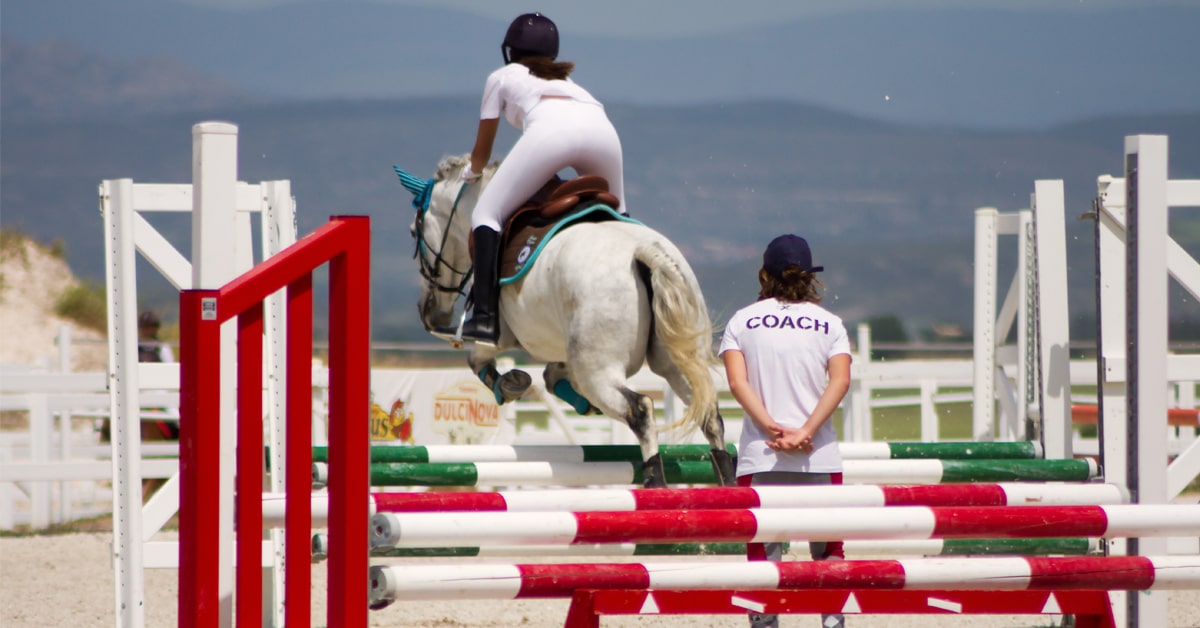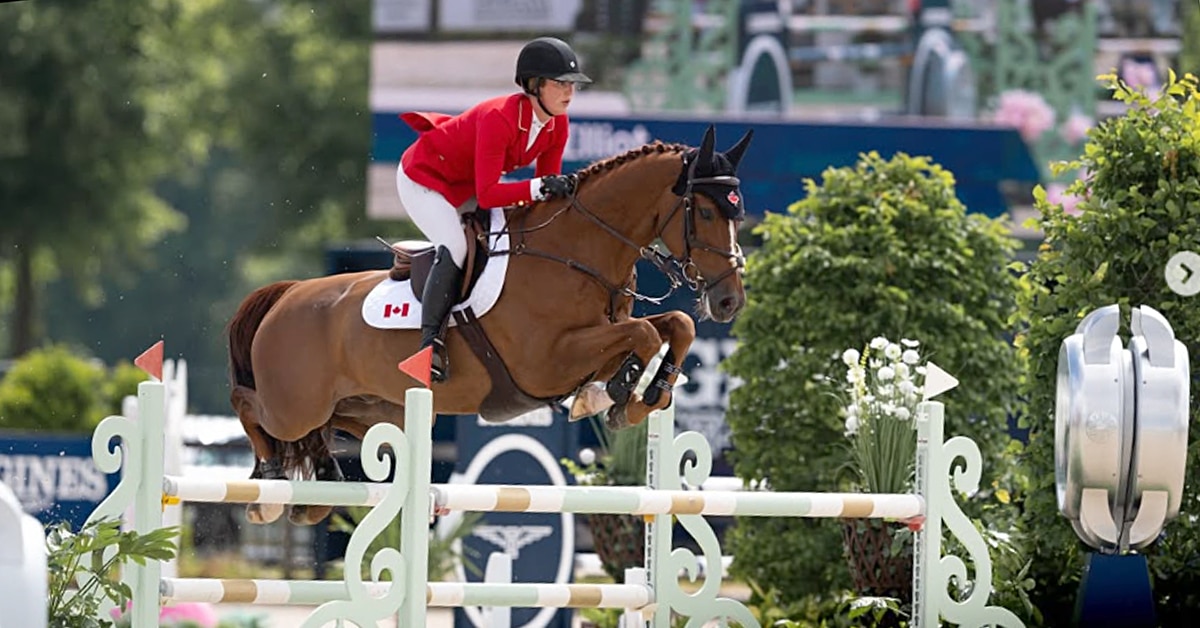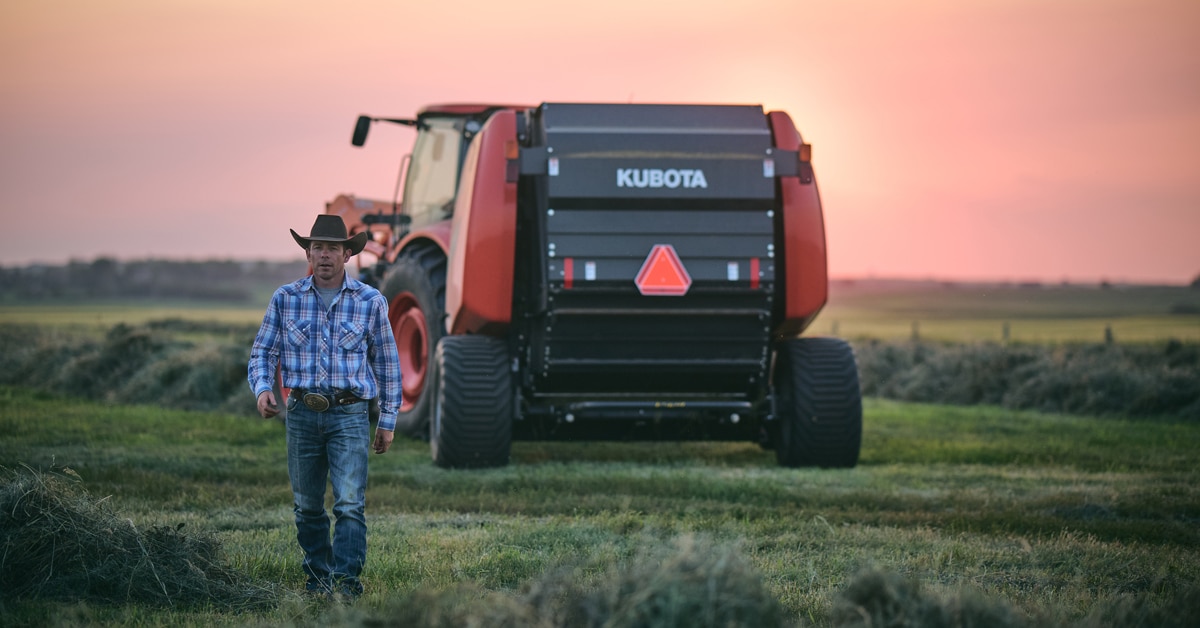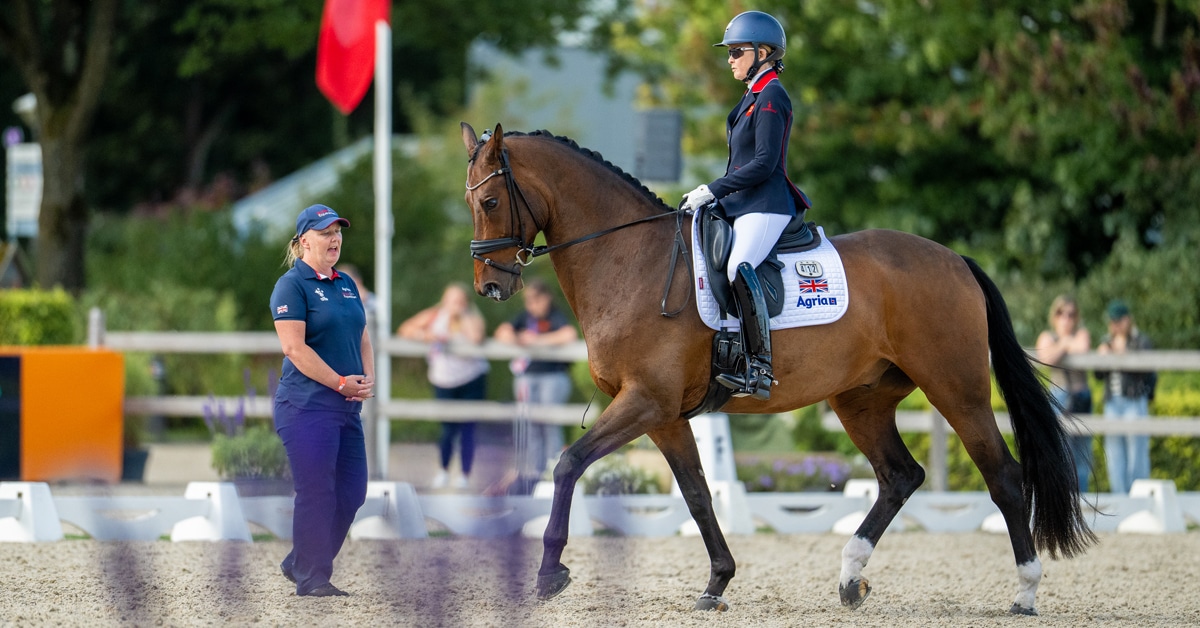The Goldilocks Zone: that comfortable place where all our needs are met and we can reliably predict what happens next, knowing it will be “just right.” While human existence is fraught with uncertainty and change beyond our ability to control, horses are more fortunate. We can create for our horses that very panacea that eludes us by consistently meeting their ethological needs, and by making their world predictable and controllable. The question is, how do we know if we’re missing the mark on both of these key fronts?
From a horse-keeping perspective, science has proven that mimicking the environment in which horses evolved is the surest way to keep them sound and sane. They thrive from companionship with other horses, freedom to move, access to shelter, water and forage ad libitum. But arguably the greatest welfare issue for the ridden horse – and the biggest challenge we face as riders – is the confusion and uncertainty brought to our horses’ world when we pick up the lead rope or reins and use inconsistent aids. If the questions we ask with our aids are irregular and variable, the behaviour from our horses will be, too.
Conflict Behaviour is Communication
Conflict behaviour is the surest way horses have of getting our attention – the quintessential feedback that our aids are as murky as last week’s latte, or worse, we are causing them discomfort and pain. Moreover, research shows there are high correlations between many in-hand and under-saddle conflict behaviours. So if our groundwork is sketchy, there will be no miracles when we put our left foot in the stirrup.
The first step in resolving conflict behaviours, according to equine cognition expert Dr. Andrew McLean, is to understand their cause and consider them objectively as a by-product of confusion that results in hyper-reactive responses. If we hear ourselves thinking our horse ‘misbehaves,’ we have defaulted to a subjective reaction. Using objective curiosity and keen observational skills, we can skip the anthropomorphic trap where we take the behaviour of the horse personally and label him a miscreant.
Usually, the very behaviour we’d prefer to blame on our horse was created by our own inconsistent use of aids, or those of a rider before us, through lack of understanding how horses learn, or even through absentmindedness. As an example, McLean notes every time our horse runs through the aid for ‘stop’ or reefs on the reins, pulling them from our hands, we de-train a reliable ‘stop.’ When we ask for a brisk walk and accept a slow stroll, we de-train a reliable ‘go.’
In the equine Goldilocks Zone, “pain or pressure is escapable, controllable and predictable, and results in a calm, secure horse,” says McLean in his frequent lectures worldwide. When the opposite is true, the horse becomes insecure, anxious, and responds with conflict behaviours that are implicated in 61% of horse-related accidents. Not deterred by statistics, McLean states, “I don’t mind sounding like a broken record. I firmly believe that conflict behaviours can be remedied humanely with a re-installation of the basic responses of stop, go, and turning the forelegs.” Can it really be that simple?
Correct Behaviour by Creating Habits
Yes it can, maintains McLean. It’s all about habits. Informed by research on how horses learn, he has developed an approach that resolves conflict behaviours by teaching the horse habituated responses to the basic aids given by the handler or rider. Knowing the correct response to these aids creates a more predictable, and hence less stressful, existence for the animal. “Good training gives the horse controllability,” he says. “The more you train your horse, handling and riding become like behavioural enrichment. Compared to his natural environment [pre-domestication], the horse has an empty world unless you do something with him. But you must make him as secure as you possibly can in his work so he is free of pain and pressure. As an example, you give him a light aid … and he can ‘switch off’ that aid with the correct response.”
In Equitation Science, McLean and co-author Dr. Paul McGreevy distill a daunting inventory of dysfunctional behaviours into a short, tidy list of re-training solutions. “Most behaviour problems occur through dysfunctions of line and speed,” notes McLean. Importantly, “incorrect application of negative reinforcement” (read rider error), such as poor timing of pressure release, rewarding inconsistent responses from the horse or not rewarding successive approximations of the behaviour being trained, are common denominators for the horse’s acquisition of all conflict behaviour. As an example, when the horse responds to the pressure of an aid correctly and through poor timing there is no release, or late release, from that pressure, the rider creates an aversive event that the horse cannot control.
The Three Phases of Timing
McLean believes ‘timing’ does not have to be either genetically inherited or a nebulous concept. He says there are three “phases” to timing in pressure release:
• a light rein or leg aid or please;
• a stronger aid or do it; and
• the release of pressure (reward) or thank you.
The horse learns that the light aid foreshadows the stronger aid, and begins to respond to the light aid alone. However, for the horse to understand that he has made the correct response to the aid, all three phases should take place in no more than three seconds. This translates at a walk or trot to no more than four steps of the forelegs and at a canter or gallop to two full strides. And from the perspective of equine learning, correct responses become habits more quickly when riders train using the same recipe that works for them in the gym – McLean promotes “three sets of at least three repetitions in a row.”
But good training is not just about the horse. McLean’s wife and frequent teaching partner, international-level riding coach Manuela McLean, reminds riders to use their bodies thoughtfully. As riders, our habitual aids and release of pressure must be reliably consistent to the horse, leaving no question from the horse’s perspective with regard to the correct response. “I ask riders to think of their body posture and to make it exactly the same for each question or aid,” she says. “I find that people change the way they ask the question, then get a different answer from the horse and that’s when things go wrong. The answer from the horse comes quicker if your body is consistent – you become predictable to the horse.”
Checking the Basics
Simple stuff, yes, but consistency and commitment are key to forming good habits. “Check the basic aids each day,” chant the McLeans, who are both former international-level event riders and know from experience the value these well-trained aids prove on course and in the arena. They encourage riders to use different environments and situations to deepen good basic response habits; change up your usual training area, train in poor weather or when your horse is exhibiting separation anxiety. “These are learned responses and all learned responses are subject to extinction, so they’re not going to stay perfect just because [your horse] loves you!” emphasizes Dr. McLean. “They will deteriorate if you don’t check them.”
The McLeans also insist that improvements in hand, particularly stop-and-go responses, produce unexpected improvements under saddle and in stressful situations such as new environments. Regularly, McLean says clients report loading their horse in a trailer goes more smoothly, and that in general their horse’s behaviour is better and the horse is calmer. “We have a moral duty to train animals really well,” says Andrew McLean. “Welfare is characterized by the absence of behaviour problems. Consequently, treatment and prevention of behaviour problems improves welfare.
“All you can do is try to set up [the horse’s] life … so there are no holes in this leaky glass of security. He feels really confident about his life because his whole world is clear. He knows the answers to the questions and you’re clear in the way you deliver them. This is one of the biggest messages I try to convey about doing these things in hand and under saddle.”
“We have a moral duty to train animals really well … treatment and prevention of behaviour problems improves welfare.”
The Latest


